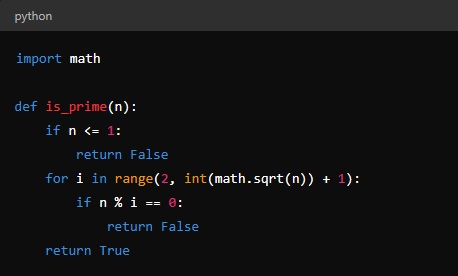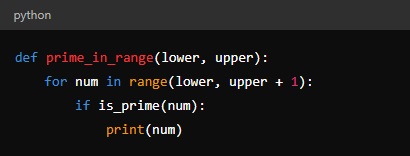
Prime Numbers Program in Python - (Updated 2024)
Ever wondered what makes certain numbers unique? Prime numbers are one of the most intriguing concepts in mathematics, acting as the fundamental building blocks of all numbers with their unique properties.
In this blog, we’ll dive into prime numbers using Python, a versatile and beginner-friendly programming language. Whether you’re an experienced programmer or a novice, join us to explore the basics of prime numbers, their significance, and how to write a program to identify them using Python.
Unlock endless opportunities with our Free Python courses.
What is a Prime Number?
A prime number is a fundamental concept in mathematics, representing a set of numbers with distinctive properties. Here’s a clear definition:
Definition: A prime number is a natural number greater than 1 with exactly two distinct positive divisors: 1 and itself.
Key Characteristics:
Cannot be formed by multiplying two smaller natural numbers.
Indivisible by any number other than 1 and itself.
Examples: 2, 3, 5, 7, 11, 13, 17, 19, etc.
Importance of Prime Numbers
Number Theory: They are crucial in number theory, forming the basis of many conjectures and theorems.
Cryptography: Essential in encryption algorithms like RSA, ensuring secure digital communication.
Computer Science: Used in optimizing algorithms and data structures like hashing, searching, and sorting.
Is 1 a Prime Number?
1 is not considered a prime number. Here’s why:
Definition: Prime numbers are greater than 1 and have exactly two distinct positive divisors.
Property of 1: It has only one distinct positive divisor: itself.
Co-prime Numbers
Co-prime numbers are pairs of integers with no common factors other than 1.
Definition: Integers where the only positive integer that evenly divides both is 1.
Example: 15 and 28 are co-prime as their only common factor is 1.
Smallest and Largest Prime Number
Smallest: 2, the only even prime number.
Largest: The largest known prime number as of 2018 is \(2^{82,589,933} - 1\), with 24,862,048 digits.
Methods to Check for Prime Numbers
Checking All Numbers:
Loop from 2 to the number itself.
Check divisibility within this range.
Efficient Method Using Square Root:
Check for factors only up to the square root of the number.
Python Program for Prime Numbers
Prime Number Checker:

Finding Prime Numbers in a Range:

Conclusion
Python’s versatility shines in handling prime numbers. Its powerful libraries and straightforward syntax make it ideal for exploring data science, machine learning, and artificial intelligence. To further your Python skills, check out Great Learning’s Free Python Courses.
Comments (0)